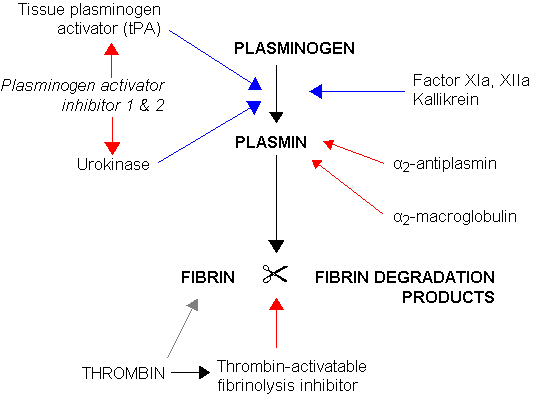Thrombolysis and Inferior Vena Cava Filter Placement
What is Thrombolysis?
Thrombolysis is a treatment to dissolve clots that have formed in blood vessels and improve the blood flow.
When is Thrombolysis performed?
It is performed when there is a thrombus (blood clot) that needs to be dissolved, which is accomplished by the administration of the pharmaceutical drugs that stimulate degradation of the clot.
Is it an invasive treatment?
Thrombolysis offers non invasive way to restore pulmonary blood flow in cases of pulmonary embolism. While anticoagulants like heparin stop further growth of the clot, thrombolitics actually dissolve and reduce its size.
How does it work?
Thrombolitic drugs work by activating plasminogen, the enzyme that is responsible for degradation of the fibrin mesh, which supports the structure of the thrombus. In this way the thrombus is made soluble and goes through the process of further proteolysis which is executed by the other enzymes in the process of clot dissolution. This process helps restore the blood flow in affected blood vessel and decrease the possibility of further complications.
After fibrin has been broken down, numerous parts of fibrin mesh are released into the blood stream. These are called Fibrin Degradation Products (FDP). Some of FDPs are used for diagnostic purposes, particularly D-dimer (small protein fragment) which is used to test for DVT and pulmonary embolism.
Some commonly used thrombolytics are: Streptokinase (Streptase), Urokinase, Alteplase etc.

What is a Inferior Vena Cava Filter?
An Inferior Vena Cava Filter (IVC Filter) is a type of vascular filter used to prevent pulmonary embolism by catching the emboli before it reaches the heart.
Who would need an IVC filter and when are they used?
In patients with diagnosed deep vein thrombosis part of the thrombus can detach and travel from the affected vein toward the heart causing pulmonary embolism. IVC filter is used when there is a contraindication for anticoagulant therapy (cerebral haemorrhage) or if the anticoagulation treatment proved to be ineffective.
How is an IVC filter placed?
An IVC filter is catheter-guided and implanted in the inferior vena cava below the renal veins. IVC filter reduces the risk of acute or subacute thromboembolitic complications, and can be placed on a temporary or permanent basis.
Author: Dr John Vrazas MB,BS FRANZCR
